Are you looking for an authentic way to explore India’s rich history? Look no further! India has a diverse range of historic destinations that are sure to transport you back in time.
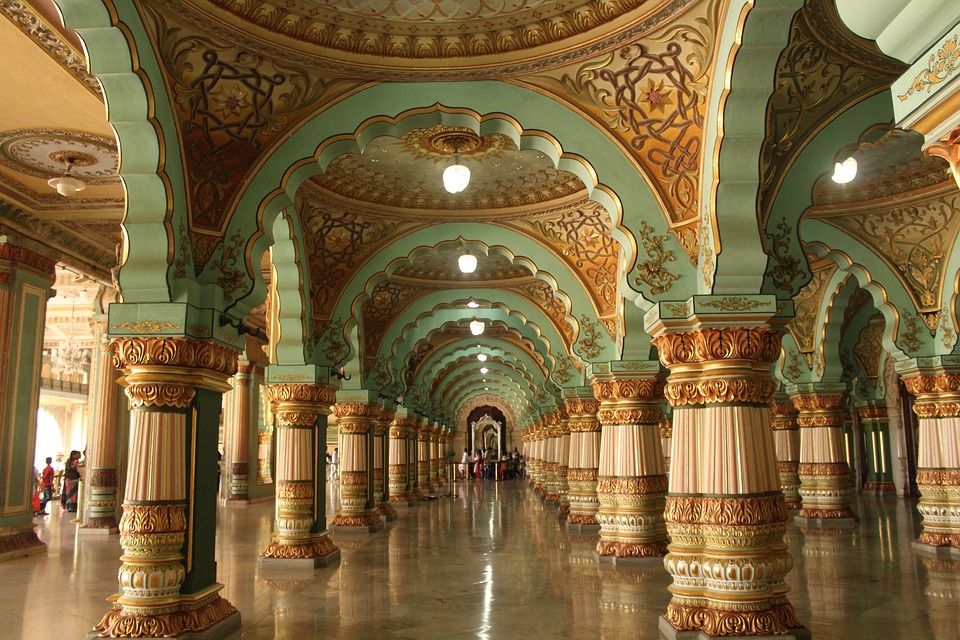
From grandiose mausoleums and monuments to colourful bazaars and bustling cities, there is something amazing around literally every corner just waiting to be discovered.
Prepare your cameras, and check out the list of 10 great historic destinations in India we’ve put together below – each provides an authentic experience for visitors eager to learn about time and generations gone by. Happy exploring!
A Tale of Rajasthani Architecture: The Majestic Amer Fort:
The massive Amber Fort, also known as Amer Palace Fort, one of Jaipur’s most popular tourist sites, sits atop a tiny hill about 11 kilometres from the city centre. The majestic Amer Fort is a sprawling palace complex constructed of pale yellow and pink sandstone and white marble. The fort is divided into four portions, each with its own courtyard. At the Amer Fort, there are numerous sites to see, including the diwan-e-aam, such mandir, and the Sheesh Mahal. The Amer Fort is a must-see for anyone interested in Rajasthani architecture.
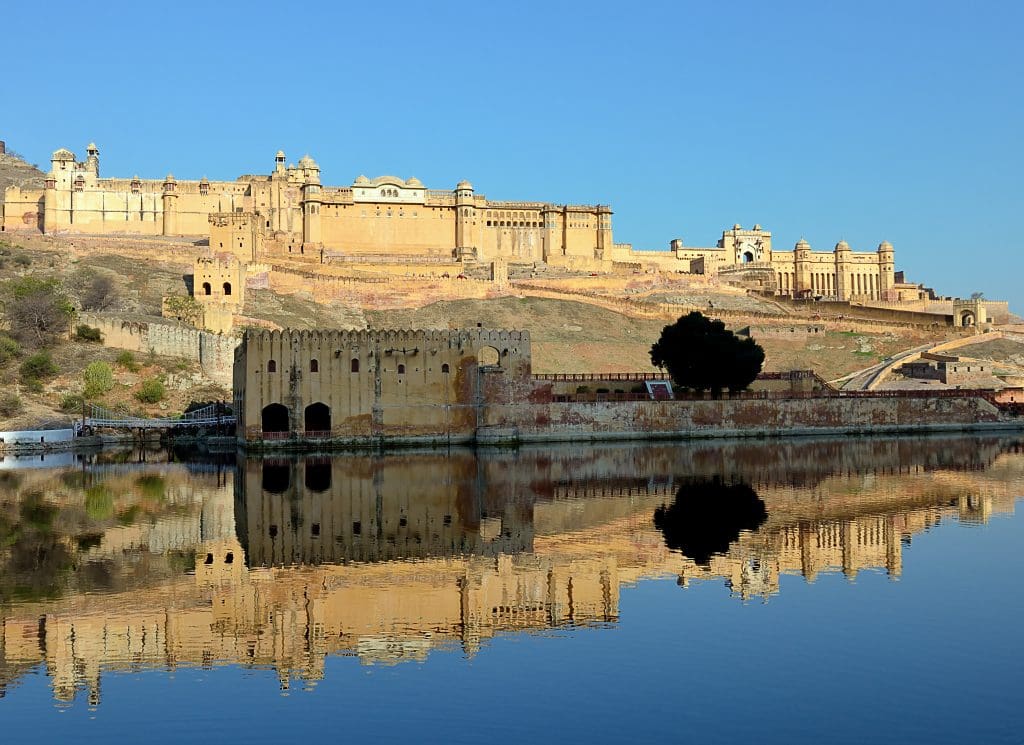
As visitors approach Amer Fort, they are greeted by the grand main entrance, known as the Suraj Pol (Sun Gate), which is adorned with intricate frescoes and ornate carvings. This majestic gateway sets the stage for the architectural wonders that await within the fort’s walls.
The interior of Amer Fort is a treasure trove of palaces, courtyards, and ornate chambers, each showcasing a unique blend of Rajput and Mughal architectural styles. One of the highlights of Amer Fort is the Sheesh Mahal (Mirror Palace), a breathtaking chamber entirely embellished with thousands of tiny mirrors, creating a dazzling effect when light falls on them. The fort also houses the Sukh Niwas (Pleasure Palace), which features a system of water channels designed to cool the air during hot summers.
In the evenings, Amer Fort comes alive with the spectacle of the Sound and Light Show, where the fort’s history is narrated through colourful lights and sound effects. This immersive experience further enhances the appreciation for the fort’s cultural and historical significance.
Amer Fort stands as a proud testament to the valour, artistic genius, and regal lifestyle of the Rajput rulers. It is not just a historical destination but a living legacy that continues to captivate visitors, offering a glimpse into the grandeur and heritage of Rajasthan.
Unearth the Ancient Secrets of India with a Trip to the Elephanta Caves, Maharashtra
The Elephanta Caves, a UNESCO World Heritage Site located on Elephanta Island in Maharashtra, India, are a captivating historical destination that serves as a mesmerizing throwback in time. These caves, together with the natural beauty of the area, make for an ideal one-day trip from Mumbai. The caves’ panels depict five stages in an ascetic’s life: the significance of a teacher, his grace, the illusory presence of the world, the oneness of Shiva-shakti,’ and Shiva’s ultimate form.
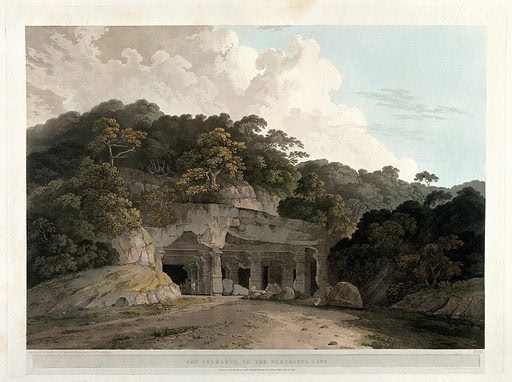
Elephanta caves may be reached by small motorboats departing from the Gateway of India. The journey itself is an experience, as it offers breathtaking views of the Arabian Sea and the Mumbai skyline.
Dating back to the 5th to 8th centuries, the Elephanta Caves are a series of rock-cut temples dedicated to Lord Shiva, one of the most revered deities in Hinduism. The caves are a testament to the artistic and sculptural achievements of the ancient Indian civilization, showcasing a blend of Hindu and Buddhist influences.
The main cave, known as the Shiva Cave or the Great Cave, is the largest and most impressive of the caves on Elephanta Island. As visitors enter the cave, they are immediately awestruck by the colossal statue of Lord Shiva, known as Maheshmurti. This three-faced sculpture, depicting Shiva as the creator, preserver, and destroyer, stands at an impressive height of 20 feet and is a masterpiece of ancient Indian art.
The interiors of the cave are adorned with intricately carved reliefs, depicting scenes from Hindu mythology, including episodes from the life of Lord Shiva and various gods and goddesses. Apart from the main cave, the Elephanta Caves complex also features several smaller caves, each with its unique sculptures and architectural elements.
The caves are believed to have been active centres of worship and pilgrimage during ancient times, attracting devotees from various parts of India and beyond. They serve as a gateway to the past, offering a window into the ancient traditions, beliefs, and artistic genius of the people who once inhabited this region.
Discover the Sacred Wonders of Sikkim at the Rumtek Dharma Chakra Centre
The Dharma Chakra Centre is a Buddhist temple in Sikkim and is located on the hilltop of Rumtek. It was founded in 1740 and was left by Rumtek, which means God. About a 45-minute drive from Gangtok (24 miles), the seat of Tibetan Buddhism’s Kagyud order. It has housed the world’s most unusual holy scriptures and precious artefacts since the 1960s when His Holiness the XVIth Karmapa arrived.
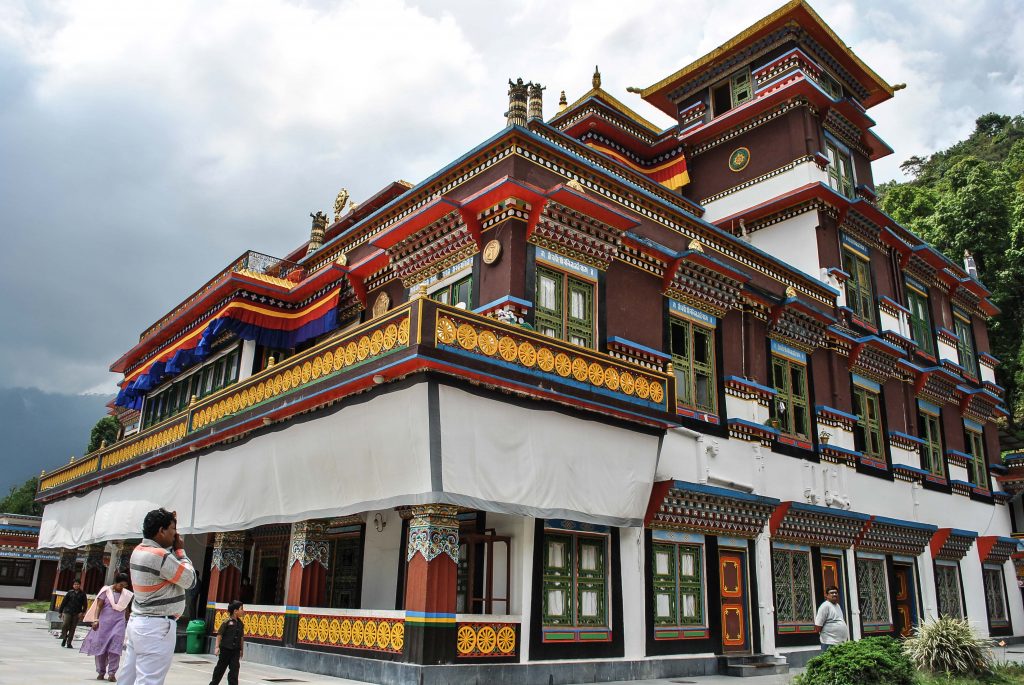
This historical destination offers a fascinating glimpse into the world of Tibetan Buddhism and serves as a throwback in time to the rich cultural heritage of the region.
Situated on a picturesque hilltop, the Rumtek Dharma Chakra Centre is the largest and most significant monastery in Sikkim. It was originally built in the 16th century, but its current structure dates back to the 1960s when it was reconstructed by the 16th Karmapa, Rangjung Rigpe Dorje, after he fled from Tibet to India.
The monastery showcases traditional Tibetan architecture, with its ornate golden roofs, intricate murals, and prayer wheels. The main building, known as the Golden Stupa, houses precious relics and artefacts, including statues, thangkas (religious paintings), and sacred scriptures. These treasures are a testament to the deep spiritual heritage and artistic traditions of Tibetan Buddhism.
Inside the monastery, the main prayer hall, known as the Dharma Chakra Hall, is a sight to behold. The hall features a massive statue of the 16th Karmapa, flanked by statues of other important Buddhist figures. Elaborate wall paintings, colourful tapestries, and intricate woodwork adorn the interior, creating a visually stunning experience.
The Rumtek Dharma Chakra Centre is not only a place of worship but also a vibrant centre for Buddhist studies and education. It houses a monastic school, known as the Karma Shri Nalanda Institute, where young monks receive comprehensive training in Buddhist philosophy, meditation, and rituals. The center also organizes spiritual retreats, seminars, and cultural events that attract scholars, practitioners, and visitors from around the world.
Visiting the Rumtek Dharma Chakra Centre is not just an opportunity to witness the splendour of Tibetan Buddhist architecture and rituals but also a chance to gain a deeper understanding of the teachings and practices of this ancient tradition.
The Majestic Humayun’s Tomb in Delhi – a Historic Wonder
The first of the magnificent dynasty mausoleums is Humayun’s Tomb in Delhi. It was constructed under the patronage of Humayun’s son, the renowned Emperor Akbar, in the 1560s. The garden-tomb was built by Persian and Indian craftsmen in collaboration, and it was far finer than any other tomb ever built in the Islamic world. The tomb is located in a historically significant archaeological site that includes the shrine of Hazrat Nizamuddin Auliya, a 14th-century Sufi saint and is considered a precursor to the iconic Taj Mahal.
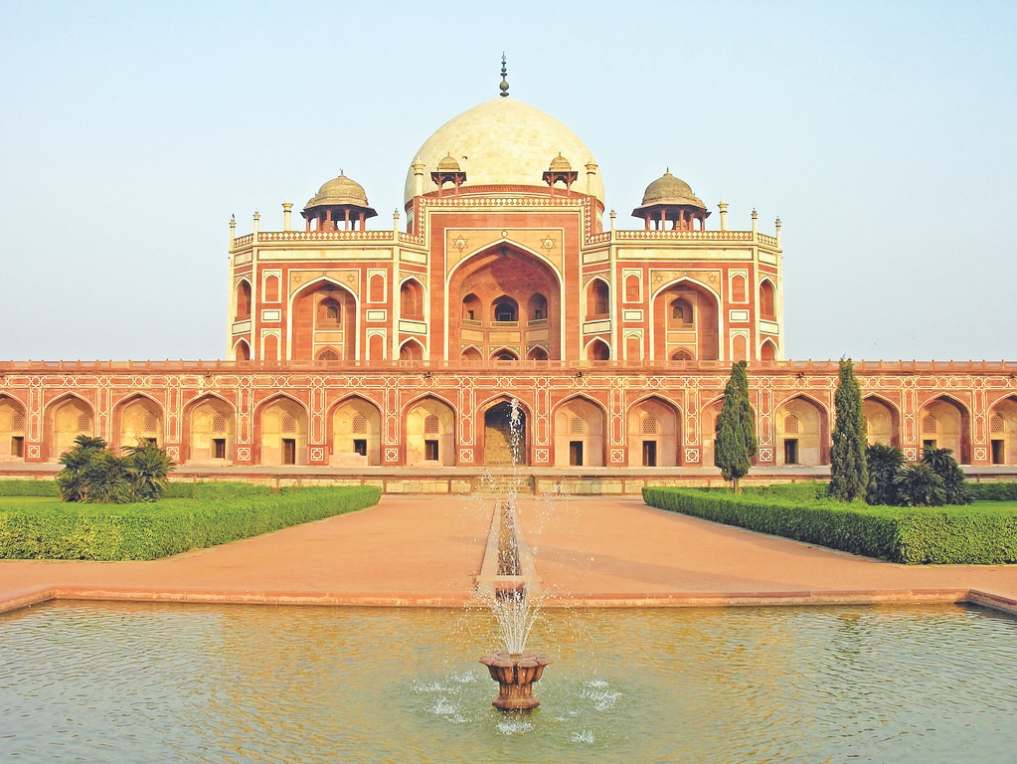
The structure is a splendid example of Mughal architecture, characterized by its red sandstone facade, intricate marble inlays, and geometric patterns. Entering the tomb complex, visitors are greeted by meticulously manicured gardens, water channels, and char bagh-style (four-part) symmetry, which is a hallmark of Mughal garden design.
The tomb complex also houses several other structures, including the Nila Gumbad (Blue Dome), Arab Sarai (guesthouse), and Bu Halima Garden. Beyond its architectural beauty, Humayun’s Tomb is steeped in historical significance. In 1993, it was recognized as a UNESCO World Heritage Site, further cementing its status as a global cultural treasure.
Humayun’s Tomb stands as a remarkable historical destination, allowing visitors to step back in time and immerse themselves in the glorious Mughal era.
The Mysore Palace Karnataka – of Monarchs and Royalty
The Mysore Palace or the Mysuru Palace that stands today, was completed in 1912 at a cost of Rs. 41,47,913. A work of Indo-Saracenic art on par with large Mughal palaces in the north and majestic colonial public buildings in the south. This opulent palace, often referred to as the “City of Palaces,” stands as a magnificent testament to the grandeur and architectural finesse of the Wadiyar dynasty, who ruled the Kingdom of Mysore for centuries.
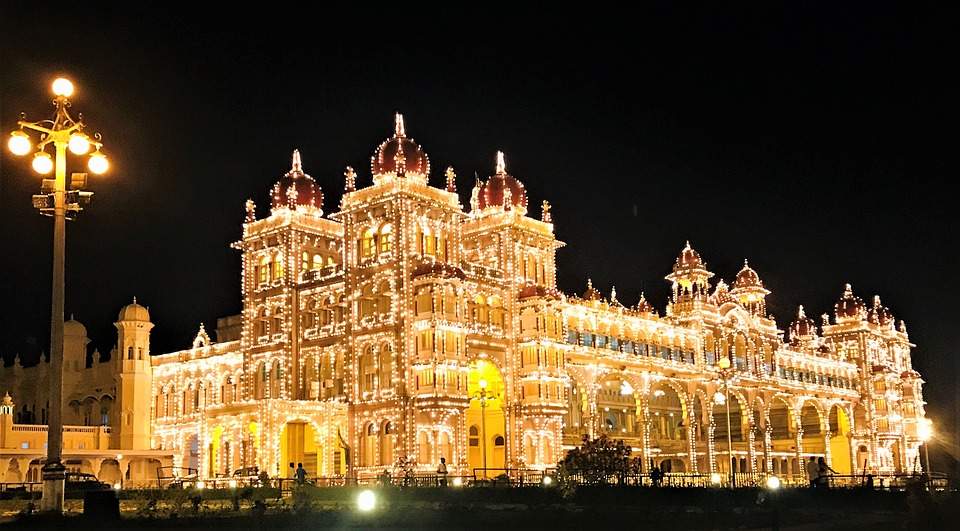
Built in the Indo-Saracenic architectural style, Mysore Palace is an awe-inspiring blend of Hindu, Muslim, Rajput, and Gothic influences. The palace is a visual spectacle, especially during the Dasara festival, when it is illuminated with thousands of lights, transforming it into a mesmerizing sight that attracts visitors from near and far.
The interiors are a marvel of craftsmanship, with intricately carved doors, gilded ceilings, stained glass windows, and elaborate murals that depict scenes from Hindu mythology and the history of the Wadiyar dynasty. The Durbar Hall, with its towering columns, arches, and a golden throne and the Ambavilasa, a grand hall adorned with Belgian crystal chandeliers, stand out with their magnificence. One of the highlights of the Mysore Palace is the palace’s private apartments, known as the Royal Residence. The royal throne, silver palanquins, and other artefacts on display add to the sense of awe and fascination.
Beyond its architectural and historical significance, Mysore Palace also serves as a cultural hub. The palace hosts various cultural events and festivals, including classical music and dance performances, showcasing the rich artistic traditions of the region. Surrounding the palace is a sprawling garden known as the Palace Gardens or Amba Vilas Palace Gardens.
A visit to Mysore Palace is like stepping into a bygone era, where the echoes of royalty still resonate, and the beauty and grandeur of the past come to life.
Historic Imphal, Manipur – Rich and Ancient Heritage
Imphal is the capital of Manipur in Northeast India and one of India’s oldest cities and carries a rich and ancient heritage. Imphal is located at 786 metres above sea level and is recognised for its stunning surroundings and lush vegetation. Manipur is a land of various tribes, with Imphal serving as the state’s cultural hub. Local events worth seeing include the Leela Festival, Lai Haraoba, Ratha Jathra, Ningol Chakouba Festival, and Cheiraoba Festival.
Imphal has been an important centre of trade, commerce, and cultural exchange for centuries. The city has witnessed the rise and fall of several kingdoms and empires, leaving behind a legacy of historical sites and architectural marvels that reflect its diverse past.
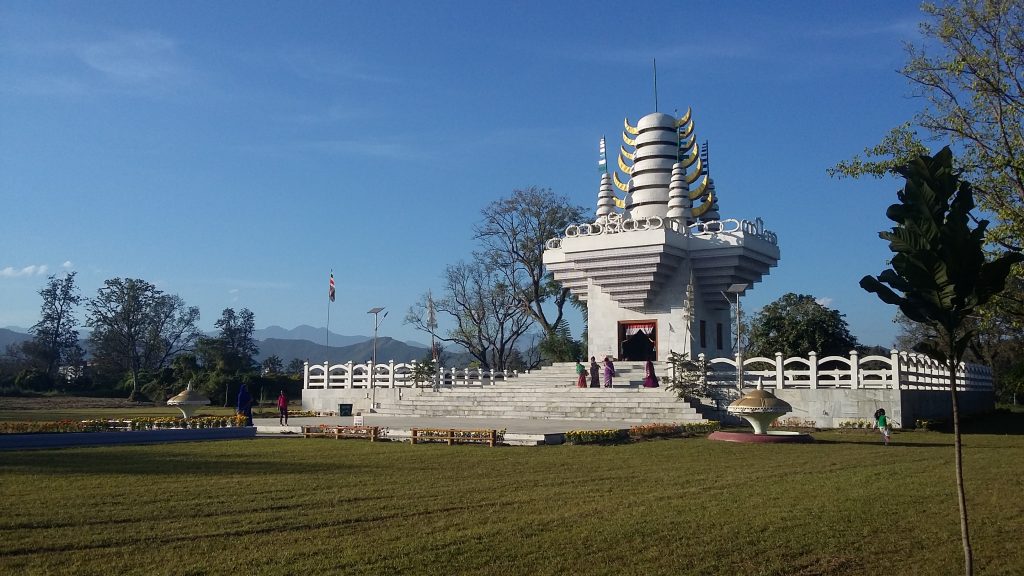
One of the iconic landmarks in Imphal is the Kangla Fort, a sprawling complex that served as the seat of power for the Manipuri kings. With its majestic gateways, temples, and royal residences, Kangla Fort stands as a living testament to Manipur’s royal heritage. The fort also houses the Kangla Museum, where visitors can explore a fascinating collection of artefacts, manuscripts, and artworks that provide insights into the history and culture of the region. Imphal is also home to the Shree Govindajee Temple, a significant Hindu temple dedicated to Lord Krishna.
Imphal is also renowned for its traditional arts and crafts. The Manipuri dance, known for its graceful movements and vibrant costumes, is a captivating expression of the region’s cultural heritage. For history enthusiasts, the Manipur State Museum is a treasure trove.
Imphal, with its rich and ancient heritage, is a historical destination that invites visitors to embark on a fascinating journey through time. It offers a perfect blend of historical sites, cultural experiences, and natural beauty, leaving visitors with a deeper appreciation for Manipur’s unique place in India’s historical and cultural tapestry.
Step back in time with Victoria Memorial, West Bengal
Victoria Memorial is one of Kolkata’s most well-known and magnificent landmarks that takes visitors on a captivating journey back in time. It was constructed between 1906 and 1921 to honour Queen Victoria’s reign in India, which lasted 25 years. The memorial has now been transformed into a museum. It also houses documents and paintings from the British Raj. To draw tourists to this spectacular monument, it also stores a number of priceless items such as Tipu Sultan’s dagger, a cannon used in the Battle of Plassey, rare books dating back to 1870, and much more.
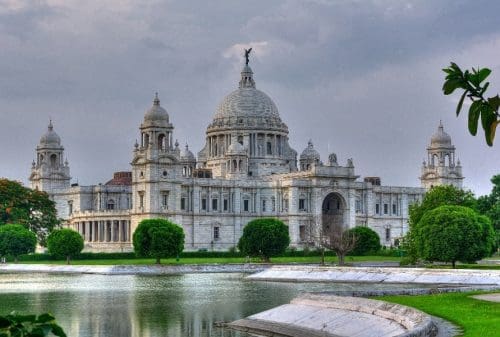
Designed by British architect William Emerson, the magnificent white-marble edifice blends elements of Indo-Saracenic and British architectural styles, creating a harmonious fusion that is both awe-inspiring and unique.The sprawling grounds with lush gardens, and serene ponds, surrounding the memorial offer a tranquil retreat for leisurely strolls and quiet contemplation.
Upon entering the memorial, visitors are transported to a bygone era through the various galleries and exhibitions that showcase the history, art, and culture of colonial India. The grand central hall houses a stunning collection of artefacts, including oil paintings, sculptures, manuscripts, and historical memorabilia that depict significant events and personalities of the time.
The Victoria Memorial also houses a remarkable collection of portraits and photographs, offering a glimpse into the lives of British monarchs, viceroys, and prominent figures of colonial India. One of the highlights of the Victoria Memorial is the Calcutta Gallery, which provides a comprehensive overview of the history and development of Kolkata, formerly known as Calcutta. Through interactive displays, photographs, and models, visitors can explore the transformation of the city and gain insights into its role as a thriving hub of commerce, culture, and intellectual pursuits during the colonial era.
The memorial’s stunning architecture is adorned with intricate carvings, domes, and towering statues that pay homage to the grandeur of the British Empire. The central dome, rising to a height of 184 feet, offers a panoramic view of the city, allowing visitors to marvel at Kolkata’s skyline and the Hooghly River.
The Victoria Memorial stands not only as a historical landmark but also as a cultural centre that hosts exhibitions, concerts, and educational programs. Its galleries and auditoriums provide a platform for showcasing Indian art, culture, and heritage, making it a vibrant hub of artistic expression and intellectual discourse. The Victoria Memorial is more than a throwback in time; it is a living testament to the interplay of history, art, and culture.
Uncover the History and Heartache of India’s Jallianwala Bagh, Punjab
The plaque at this location honours the 2000 Indians who were shot indiscriminately by British troops under the command of Gen Michael O’Dyer on April 13, 1919, while attending a peaceful public meeting. This was a pivotal moment in India’s independence struggle. The Martyr’s Gallery at the site tells the story of this heart-breaking massacre. The memorial well, into which some individuals jumped to escape, is maintained, as is a portion of the wall with bullet traces still visible.
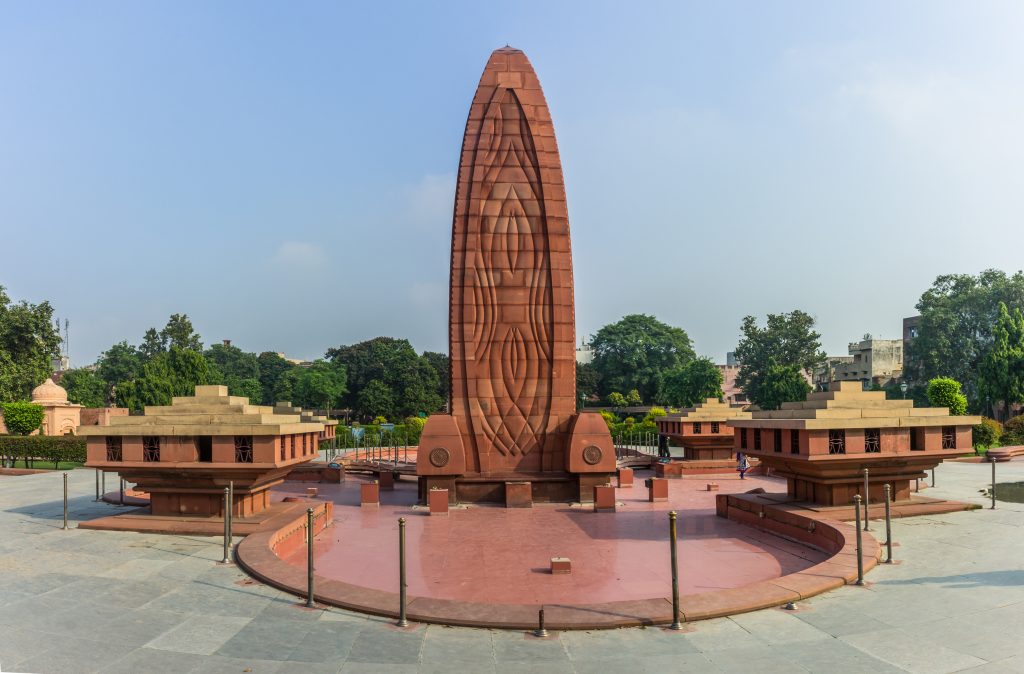
Jallianwala Bagh is a public garden that witnessed a brutal massacre orchestrated by British colonial forces under the command of General Reginald Dyer and is a poignant historical destination that serves as a sombre reminder of one of the darkest chapters in India’s struggle for independence.
The peaceful gathering of thousands of men, women, and children, who had assembled to protest the repressive Rowlatt Act, was met with indiscriminate firing that resulted in the loss of hundreds of innocent lives.
The Martyr’s Gallery, located within Jallianwala Bagh, stands as a memorial to the victims of the Jallianwala Bagh Massacre. This gallery serves as a repository of historical artefacts, photographs, and personal accounts, allowing visitors to delve deeper into the tragic events of that fateful day.
As visitors proceed through the gallery, they encounter audio-visual presentations and artistic interpretations that aim to recreate the events of the massacre. One of the most chilling aspects of the Martyr’s Gallery is the wall with bullet marks, which stands as a stark reminder of the violence unleashed on the unsuspecting crowd.
Jallianwala Bagh, where the tragedy unfolded is today a serene garden, dotted with memorial plaques, a memorial flame, and the Martyr’s Well, where many individuals jumped to escape the firing, further immersing visitors in the historical significance of the place.
Jallianwala Bagh stands as a powerful testament to the indomitable spirit of the Indian people and their unwavering determination to secure a brighter future.
Unveil the Artistic Splendor of Odisha’s Sun Temple
The exquisite Sun Temple in Konark is the pinnacle of the Odisha temple building and one of the world’s most beautiful religious monuments. The entire temple was created in the shape of a huge chariot with seven horses and twenty-four wheels, conveying the sun deity, Surya, across the skies, by King Narasimhadeva in the 13th century. Since the Vedic time, Surya has been a prominent deity in India.

This historical destination, often referred to as a “poem in stone,” takes visitors on a mesmerizing journey back in time. Picturesquely located on the shores of the Bay of Bengal, the Sun Temple is a UNESCO World Heritage Site and is considered one of the most stunning examples of ancient Indian architecture.
The temple complex is a marvel of engineering and artistic craftsmanship. and consists of three main structures: the Natya Mandap (Dancing Hall), the Jagamohana (Assembly Hall), and the Vimana (Main Temple). Every inch of the structure is adorned with intricate sculptures depicting mythological stories, celestial beings, deities, animals, and intricate motifs.
The erotic sculptures of the Sun Temple, famously known as the “Khajuraho of the East,” have fascinated visitors for centuries. These sensuous depictions are a celebration of human emotions and desire, highlighting the belief in the union of physical and spiritual realms. The eroticism, however, represents just a fraction of the overall artistic brilliance of the temple’s intricate carvings.
The Sun Temple was built in such a way that the first rays of the rising sun would pass through its main entrance, illuminating the sanctum sanctorum. The engineering prowess of the architects is evident in the precise alignment of the structure with the movements of the sun. The Sun Temple also showcases a deep reverence for astronomy. The temple is designed as a colossal celestial chariot with twelve pairs of exquisitely carved stone wheels, representing the twelve months of the year. These wheels not only add to the visual grandeur of the temple but also serve as sundials, accurately telling time based on the position of the sun.
Visiting the Sun Temple of Konark is like stepping into a time capsule that transports you to a glorious era of art, architecture, and spiritual devotion.
A Wealth of Culture and History in Sibsagar, Assam
Sibsagar, located east of Jorhat, is a historically significant area of Assam. Sibsagar served as the capital of the Ahom dynasty from the 13th to the 18th century. and is a captivating historical destination that takes you on a mesmerizing journey back in time. It’s a city full of ornate monuments and temples.
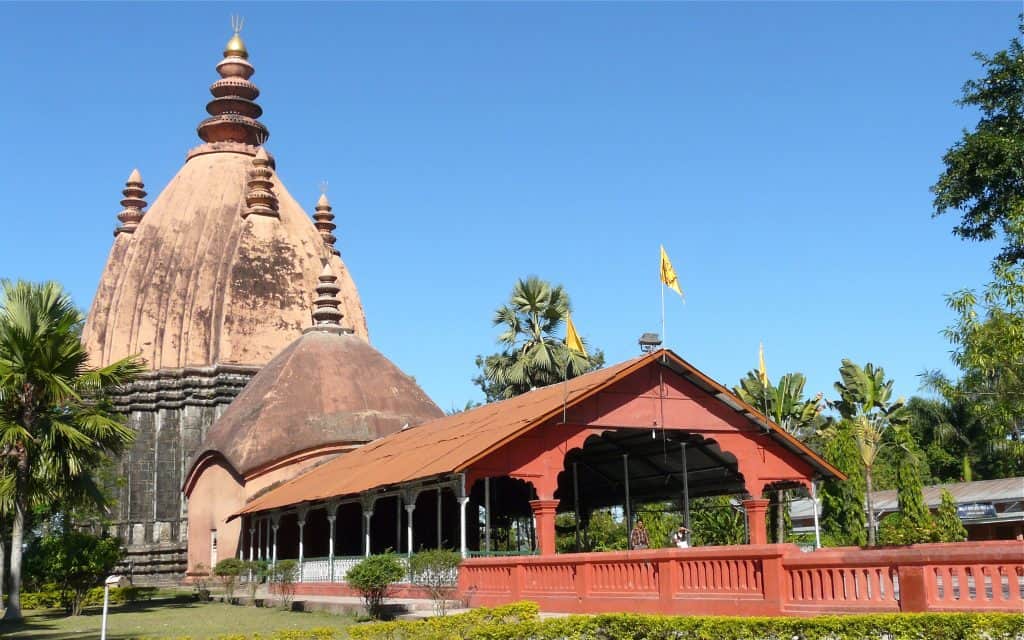
The name “Sibsagar” translates to “the ocean of Lord Shiva,” and it derives its name from the large man-made water tank called the Sibsagar Lake, which lies at the heart of the town. One of the most iconic landmarks in Sibsagar is the Rang Ghar, a two-storied pavilion that was once used as a royal sports arena. Built in the 18th century, this oval-shaped structure is believed to be one of the oldest surviving amphitheatres in Asia.
Another architectural marvel in Sibsagar is the Talatal Ghar, a seven-storied palace complex that served as the military headquarters and living quarters of the Ahom kings. This massive structure, with its intricate carvings and underground tunnels, offers a glimpse into the strategic planning of the Ahom rulers.
The Shiva Dol, also known as the Sibsagar Sivadol, is a group of three Hindu temples dedicated to Lord Shiva. These temples, built in the 18th century, stand tall and majestic, showcasing a blend of Ahom and Hindu architectural styles. The tallest among them, known as the Great Siva Temple, is an impressive 104 feet high.
Apart from these magnificent structures, Sibsagar is also home to several other historical sites, like the Kareng Ghar, also known as the Royal Palace, which once housed the Ahom royalty and the Joysagar Tank, which is the largest man-made tank in India, built by Queen Madambika in memory of her husband, King Rudra Singha.
As you explore the streets of Sibsagar, you will come across numerous ancient temples, each with its unique story and architectural style. The town exudes a sense of timelessness, with its narrow lanes, ancient monuments, and serene atmosphere, transporting you to a bygone era.
A trip to these 10 ancient destinations with their historical treasures, is not just a treat for history enthusiasts but also for those seeking tranquility and a deeper understanding of India’s rich heritage. A visit to these mesmerizing destinations is like stepping into a time capsule, allowing you to experience the grandeur and splendour of ancient India while immersing yourself in the cultural tapestry of the region.
Read More: Latest



